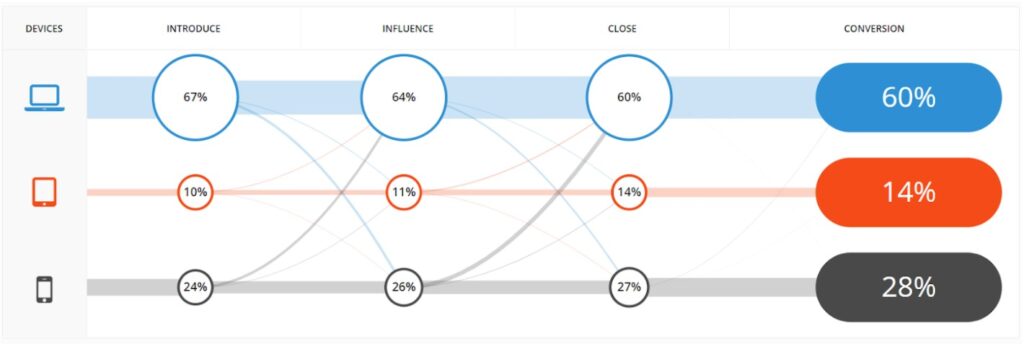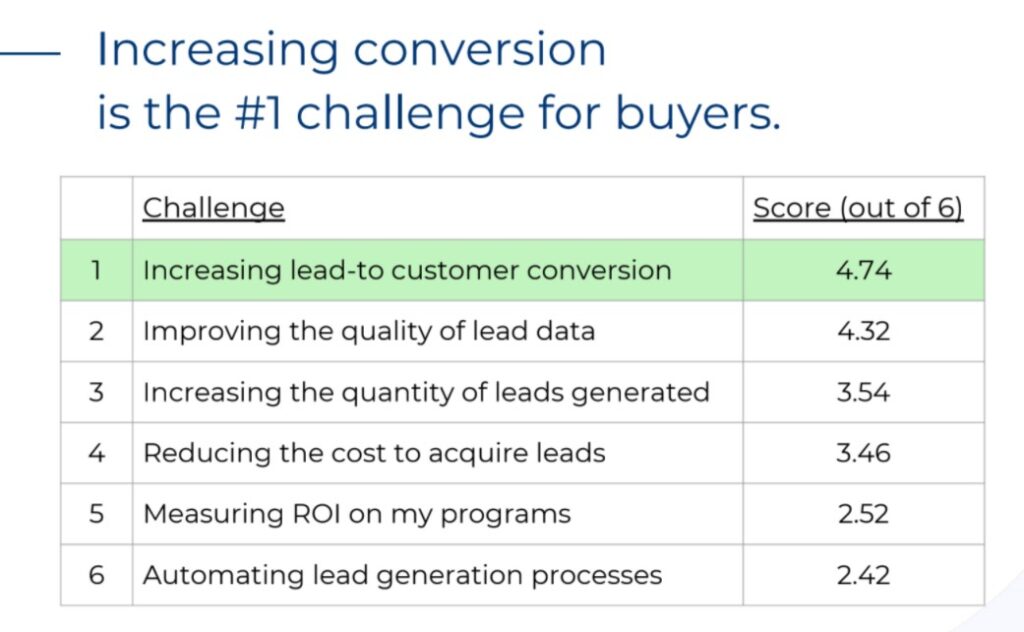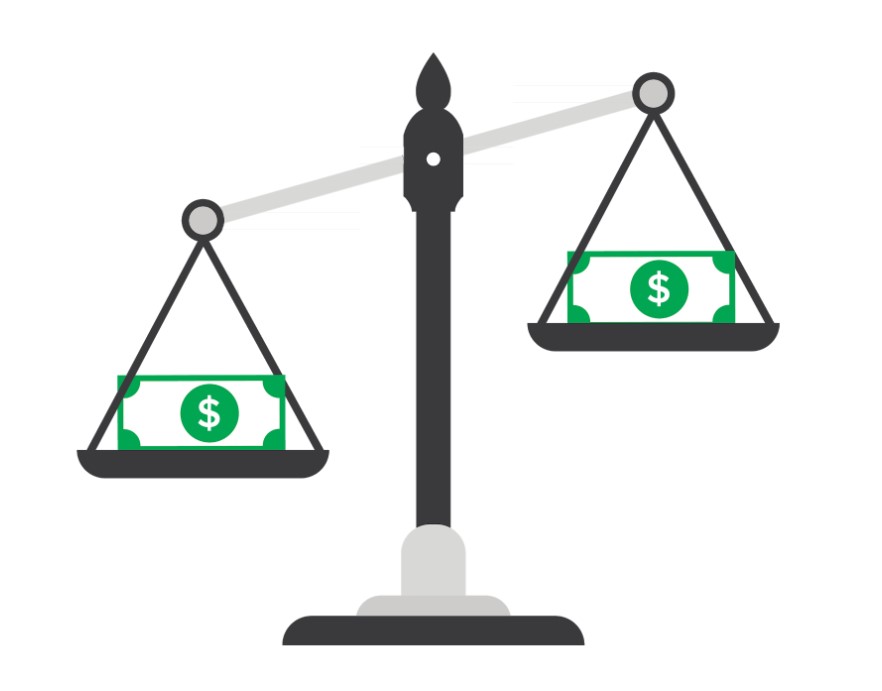Whether you’re a seasoned pro or just getting started, here are 11 metrics you should be measuring when it comes to your partnership program.
The 11 Partner Program KPIs
- ROI & ROAS
- Attributed Revenue
- Attributed ROAS
- Attributed ROI
- Click Through Rate
- Conversion Rate
- Cost Per Acquisition
- Cost Per Click
- Cost Per Lead
- Earnings Per Click
- Lifetime Value
Monitoring these KPIs will help you determine where your partner program is performing well and where there is room for improvement. Continued optimization is the key to success for any marketing campaign.

1. Return On Investment (ROI)/ Return On Ad Spend (ROAS)
Return on Investment (ROI) or Return on Ad Spend (ROAS) are often used interchangeably in the media and paid marketing world to represent the value generated by specific marketing initiatives. It can be analyzed at a channel or campaign perspective, although channel managers who are managing a specific channel can use ROI/ROAS to optimize at a more granular level for their channel, such as ad groups and keywords for Paid Search managers, or placements and ads for Display and Video managers.
2. Attributed Revenue
Refers to the fractional revenue allocated by an attribution model to the channels, campaigns, keywords, placements or whatever attributable element. For instance, for a conversion path consisting of a paid search touchpoint followed by a display touchpoint leading to a single conversion worth $50 in revenue, and assuming an even distribution of credit (i.e. a linear attribution model), the paid search channel gets an attributed revenue of $25 and the display channel gets an attributed conversion of $25.
Note that advertisers can choose to provide pure revenue for their attribution analysis, but it’s usually better to use net revenue (which takes revenue and subtracts product costs) for your attribution calculation.

3. Attributed ROAS
ROAS means Return on Ad Spend, and is a derived metric that captures how effective your media investment was in delivering positive value versus how much you spent on that media. Since Return on Ad Spend (ROAS) is a derived metric, attributed credit is not directly distributed to these metrics. Rather, Attributed ROAS is calculated using Attributed Revenue.
The formula used is: Attributed ROAS = Attributed Revenue / Media Cost
4. Attributed ROI
ROI is a derived metric that captures how effective your media investment was.
It looks at:
- the positive value associated with the user performing the desired action (for instance, making a purchase, where the positive value is the money they spent)
- the cost of the media
- the cost of goods sold (the cost associated with the product.
As you can tell, Return on Investment (ROI) is related to Return on Ad Spend (ROAS), but also adds the cost of the product in the calculation of the derived metric. Because Attributed ROI is a derived metric, attributed credit is not directly distributed to it. Rather, Attributed ROI is calculated using Attributed Revenue.
The formula used is: Attributed ROI = Attributed Revenue / (Media Cost + Cost of Goods Sold)
5. Click-Through Rate (CTR)
The ratio of clicks to impressions, usually displayed as a percentage.
6. Conversion Rate
A rate of the number of times a tracking link has lead to a sale vs. the number of times the link has been clicked on, shown in percentage. To calculate this rate, take the amount of sales a banner has generated and divide it by the number of clicks. Multiply by 100 and the answer you get is the conversion rate.

7. Cost Per Acquisition (CPA)
CPA, or Cost per Acquisition or Cost per Action, is a metric that is tracked in many direct response and performance campaigns, particularly in verticals that are tracking user conversions — whether that conversion represents a sale or a form submission, depending on what the advertiser decides. This is why it’s also often referred to as Cost per Conversion.
Some marketers will include “clicks” as a viable action — in those cases, the calculation is essentially equivalent to a CPC (Cost per Click).
A related concept is eCPA, or Effective Cost per Acquisition. This is often calculated by advertisers who pay on another cost basis such as CPM or CPC, but wish to convert it to a Cost per Acquisition in order to optimize their media buying to some Cost per Acquisition target.
CPA is calculated as follows: (sum of the relevant media costs / total # of acquisitions)
So, if a display campaign spent $1,000, and garnered 20 conversions, then the the eCPA = $1000 / 20 = $50

8. Cost Per Click (CPC)
CPC, or Cost per Click, is a metric that is tracked in many branding, direct response and performance campaigns across any vertical. A click often refers to clickthru on an ad that directs them to the advertiser’s website, though many rich media campaigns may count a click on the ad that triggers some engagement (for instance, the user clicks on the ad to start playing a video, or playing a mini-game on the ad unit); in the rich media situation, this can also be referred to as Cost per Engagement (CPE).
A related concept is eCPC, or Effective Cost per Click. This is often calculated by advertisers who pay on another cost basis such as CPM, but wish to convert it to a Cost per Click in order to optimize their media buying to some Cost per Click target.
CPC is calculated as follows: (sum of the relevant media costs / total # of clicks)
So, if a display campaign spent $5,000, and garnered 250 clicks, then the the eCPC = $5000 / 250 = $20
9. Cost Per Lead (CPL)
CPL, or Cost per Lead, is essentially a subset of CPA, or Cost per Acquisition, specifically used by verticals that require the audience to complete a form with their contact info. For instance, in the insurance vertical, an interested user may have to enter their personal info in order to request an insurance quote or have a broker contact them.
10. Earnings Per Click (EPC)
Earnings per click (EPC) is a measurement of how much commission partners tend to make on average for each click they generate for an advertiser’s program. This is a way for partners to estimate how much money they will make on a CPA basis, based on their expected click volume.
11. Lifetime Value (LTV)
The Lifetime Value (or LTV for short) captures the total value generated by a particular customer for a given advertiser, usually because of repeat purchases or conversions made by a given customer. Consumers with high LTV are a brand’s most valuable consumers, and many marketers rightfully attempt to locate audiences that increase their average LTV.
Interest in improving your partnership metrics? Contact us or sign up for a Demo. Interested in learning more partnership terms and what they mean? Visit our glossary.




